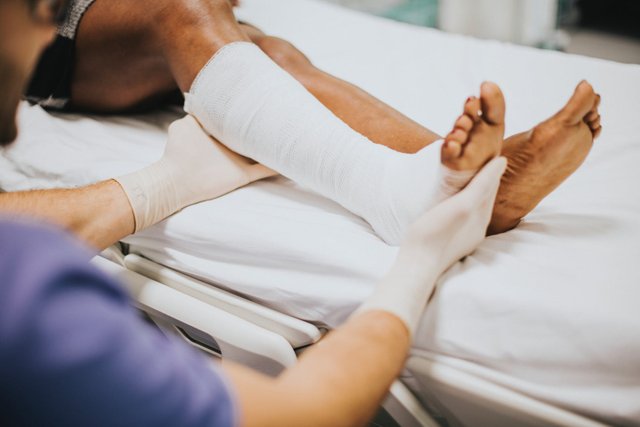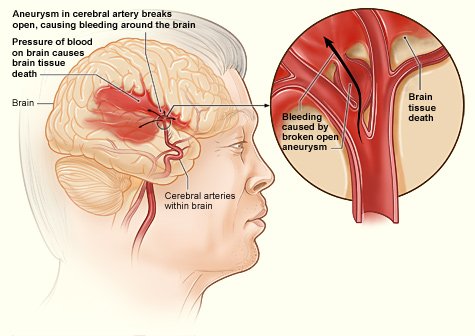ON ROAD TRAFFIC ACCIDENTS; INTERNAL BLEEDING A SILIENT KILLER
In the setting of road traffic accidents [RTA], and any other major type of physical trauma, the focus is usually on external blood loss through ugly wounds.
And when there's none of such, the victim, and in some cases the [perhaps naive] healthcare provider, heaves a sigh of relief, stemming from this false sense of safety.
However, fact is that one can be bleeding, without any evidence of it apparent externally. And more often than not, such internal bleeds may prove fatal if not addressed, and ON TIME.
The body is full of cavities-- spaces, into which one can bleed "comfortably" up to the point of exsanguination. There's the thighs which can hold up to 1 to 2 litres of blood; the chest which can hold up to 2 litres of blood; and the abdomen which can hold upto 2 to 3 litres!
One may not really understand the implication of such bleeds, and the consequence of delayed intervention, until one understands the following facts;
- That an acute loss of more than 15% of the blood volume, without a concurrent ongoing replacement, could lead to IRREVERSIBLE shock and death.
- That the total blood volume is approximately 5 litres, and that as little as one litre, is already 20% of that volume!
This exposition puts into perspective how disastrous it could be not to recognize internal bleeding early enough.
I could bore you with gory stories of deaths from both recognized and unrecognized internal bleeding, including the incident that spurred this writ. But I'm not gonna do that; I will instead talk about how to recognize an ongoing internal bleeding following RTAs.

pexels
RECOGNIZING AN ONGOING INTERNAL BLEEDING.
The presence of the following in an accident victim, with no evidence of external blood loss, should raise suspicion for a possible ongoing internal bleeding.
At The Accident Site, Or In Transit;
- Excessive thirst.
- Dizziness.
- Disorientation.
- Fast breathing.
- Palpitation [ undue awareness of one's heart beat]
- Excessive sweating.
- Fainting, or feeling like fainting, on standing up abruptly.
- Icy cold, and sweaty, hands and feet.
In the hospital, all of the above plus the following:
- Pallor [the pink/red part of the eyes looking pal, as if drained of blood].
- Breathlessness.
- A racing, and difficult-to-feel, pulse.
- A blood pressure less than 90/60 mmHg.
These are features of acute blood loss. And if they are present, and there's no external evidence of bleeding; then the blood is going somewhere else! And one needs to find out where, and do something pretty fast.

Wikimedia
IDENTIFYING THE SITE OR SOURCE OF THE BLEEDING.
To identify the source of bleeding, let PAIN guide you. Pain is usually the first pointer to the possible site of bleeding.
Understandably, the victim may be feeling pain at multiple sites, having had a major physical traumatic event. However, the focus should be on either of this three;
- the Chest.
- the Abdomen.
- and the Thigh.
BLEEDING INTO THE CHEST
This is usually caused by a blunt trauma to the chest leading to rib fracture, and subsequent laceration of a vessel by the jagged ends of the fractured rib.
So, the following would help identify it;
Signs Of Rib Fracture
- Chest pain.
- Tenderness over the fracture site.
- Crepitus on palpation.
- Positive chest compression test.
Signs Of Hemothorax [blood in the chest]
- Absence of chest movement with breathing on the affected side.
- Poor air entry on the affected side.
- Reduced tactile fremitus.
- Stony dull sound on percussion.
- Deviation of the trachea to the opposite side-- if it is a massive bleed.
- Needle thoracostomy would yield blood.
Signs Of Cardiac Tamponade.
Sometimes, the bleeding occurs in the space surrounding the heart, squeezing it tight, and preventing it from pumping effectively.
This could be recognized with BECK'S TRIAD:
- Absent, or distant [barely audible], heart sounds.
- Distended neck veins.
- Hypotension.
BLEEDING INTO THE ABDOMEN
In the setting of physical trauma, like RTA, this could come due to blunt trauma affecting three major structure;
- The Aorta [the largest artery in the body. God save your soul if this happens in Nigeria!]
- The Spleen [usually from fracture of the left lower ribs]
- The Liver [usually from fracture of the right lower ribs]
Signs Of Hemoperitoneum [bleeding into the abdomen]
- Abdominal distension.
- Flank fullness.
- Severe abdominal pain, and tenderness.
- Shifting dullness.
- Ileus [ a quiet, non-moving intestines]
- Features of peritonitis.
- Bruises on the skin, especially at the flanks [Grey Turner's sign], or around the umbilicus [ Cullen's sign], which are both features of retroperitoneal bleed.
- A four quadrant tap would yield non-clotting blood, especially if it is massive bleeding.

Wikimedia
BLEEDING INTO THE THIGH
This usually occurs when there's a closed fracture of the femur-- the thigh bone, the jagged ends of which can lacerate the femoral artery [the artery of the thigh] which is a very large vessel.
Signs Of Femoral Fracture
- Limb shortening.
- Thigh deformity.
- Inability to bear weight on the affected limb.
Signs Of Bleeding Into The Thigh.
- Thigh swelling [hematoma]
- Sensation of tightness around the thigh.
- Skin discoloration [Ecchymosis]
- Tingling sensations in the leg.
- Etc
BLEEDING INTO THE HEAD
This is a topic of its own. I didn't include it initially because the problem in this case is not really due to blood loss, as the cranial cavity cannot hold large volumes of blood; but rather due to rise in the pressure inside the head.
There are two main types of traumatic bleeding into the head;
- Subdural Hematoma.
- Epidural Hematoma.
General Features Of Both [Signs Of Raised ICP]
- Headaches.
- Blurring of vision.
- Vomiting.
- Convulsions.
- Unequal pupils.
- Motor deficit [paralysis, complete or partial, of a part of the body]
- Loss of consciousness.
CONCLUSION
Following any accident, whether the above are present, or not; whether there are other obvious injuries, or not; the right thing to do is to go to a hospital for a thorough review.
REFERENCES
This post has been voted on by the SteemSTEM curation team and voting trail in collaboration with @curie.
If you appreciate the work we are doing then consider voting both projects for witness by selecting stem.witness and curie!
For additional information please join us on the SteemSTEM discord and to get to know the rest of the community!
You can only hope the accident ain't bad if it happens in Nigeria, or you'd be toast.